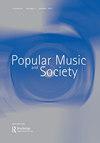The Invention and Reinvention of Big Bill Broonzy
IF 1
3区 艺术学
0 MUSIC
引用次数: 0
Abstract
ing down Perry’s version of “Pop Goes the Weasel” with the bass, high in the mix – a trademark of dub – and a counter melody on the sax playing the familiar melody of the tune. “The bass line guides the track, but the guitar and sax punch through the song to set the framework and give the dub life” (50). In Chapter 5, under Rhythmic Interplay, Abbey observes how King Tubby in “Young Generation Dub,” strips the guitar and piano from the mix while increasing the volume of the horns, which “are used on the upbeats in between the main melody line” (83), allowing the bass to drive the song. Such a consistent structure runs the risk of growing predicable and tedious, but I found that it helped me to focus on the subtleties of the songs, particularly if I listened to the track as I read. In this way, the book serves as a primer to dub, in general, and these important albums, in particular. I do have a quibble with the book. In one way or another, Abbey repeats that “the end goal [of dub] was to make money” (xviii), or, put another way, a dub album “was an attempt to make money off the reuse of tracks” (42). The problem is not just with the repetition, but Abbey never develops this theme. What were the economics of dub, at least in Jamaica? What were the recording costs? How much did the producers/engineers earn from releases? I wonder, too, how much could have been profited from an album like Java, Java, Java, Java with only 1,000 initial pressings? Though dub found audiences around the world, it has never been more than a niche genre. I found these constant reminders, with no development, distracting and irrelevant to a book largely focused on sound and social context. However, the strengths of the book outweigh this relatively minor weakness. Distillation of Sound is well thought out and well researched. Abbey draws from established cultural and music theorists (e.g., Raymond Williams, Simon Frith); Jamaican music scholars (Marvin Sterling, Michael Veal); published interviews (with Erroll Thompson, Dennis Bovell); and his own interviews with producers (Lee “Scratch” Perry, Adrian Sherwood, among others), sound system operators (Tony Myers), and Jamaican cultural and music scholars (Donna Hope, Sonjah Stanley Niaah). In short, Distillation of Sound serves as a reader’s guide to a genre that has been incredibly influential despite its relatively small following. Anyone interested in dub would do well to seek it out.大比尔·布朗尼的发明和改造
在Perry的“Pop Goes the Weasel”版本中,贝斯的声音很高——这是配音的标志——萨克斯的反旋律演奏出熟悉的旋律。“贝斯线引导着音轨,但吉他和萨克斯贯穿着歌曲,奠定了框架,赋予了配音生命”(50)。在第五章“节奏的相互作用”一章中,艾比观察了塔比国王在“年轻一代配音”中是如何将吉他和钢琴从混音中剥离出来,同时增加喇叭的音量的,喇叭“用于主旋律线之间的高音”(83),让低音驱动歌曲。这种连贯的结构可能会让人觉得难以预测和乏味,但我发现这有助于我专注于歌曲的微妙之处,尤其是当我一边读一边听歌曲时。这样,这本书就成了配音的入门读物,尤其是这些重要的专辑。我对这本书确实有意见。无论如何,艾比重申“(配音)的最终目标是赚钱”(xviii),或者换句话说,配音专辑“是试图通过重复使用歌曲来赚钱”(42)。问题不只是重复,《艾比》从来没有发展过这个主题。dub的经济学是什么,至少在牙买加是这样?录制成本是多少?制作人/工程师从发行中获得了多少收益?我也想知道,像《Java, Java, Java, Java》这样的专辑只有1000次发行,它能带来多少利润?虽然配音在世界各地都有观众,但它从来都只是一种小众类型。我发现这些不断的提醒,没有发展,分散注意力,与一本主要关注声音和社会背景的书无关。然而,这本书的优点超过了这个相对较小的缺点。声音的蒸馏是经过深思熟虑和深入研究的。艾比借鉴了知名的文化和音乐理论家(如雷蒙德·威廉姆斯,西蒙·弗里思);牙买加音乐学者(Marvin Sterling, Michael Veal);发表的采访(与埃罗尔·汤普森,丹尼斯·博维尔);以及他自己对制片人(“Scratch”Lee Perry, Adrian Sherwood等人),音响系统操作员(Tony Myers)和牙买加文化和音乐学者(Donna Hope, Sonjah Stanley Niaah)的采访。简而言之,《声音的蒸馏》是一种读者指南,尽管它的追随者相对较少,但却具有令人难以置信的影响力。任何对配音感兴趣的人都应该好好寻找一下。
本文章由计算机程序翻译,如有差异,请以英文原文为准。
求助全文
约1分钟内获得全文
求助全文
来源期刊

POPULAR MUSIC AND SOCIETY
MUSIC-
CiteScore
1.10
自引率
0.00%
发文量
33
期刊介绍:
Popular Music and Society, founded in 1971, publishes articles, book reviews, and audio reviews on popular music of any genre, time period, or geographic location. Popular Music and Society is open to all scholarly orientations toward popular music, including (but not limited to) historical, theoretical, critical, sociological, and cultural approaches. The terms "popular" and "society" are broadly defined to accommodate a wide range of articles on the subject. Recent and forthcoming Special Issue topics include: Digital Music Delivery, Cover Songs, the Music Monopoly, Jazz, and the Kinks. Popular Music and Society is published five times per year and is a peer-reviewed academic journal supported by an international editorial board.
 求助内容:
求助内容: 应助结果提醒方式:
应助结果提醒方式:


